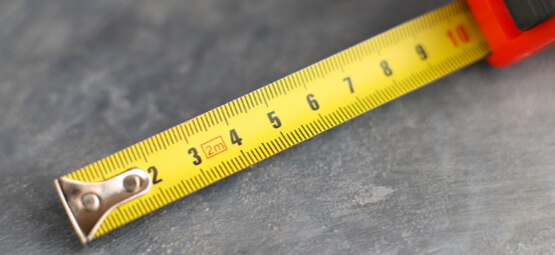The Problem of “Plasticizer Migration”
“We’ve got a problem. Your concrete sealer has failed!” your best customer scowls as the two of you stand there looking at the marks left everywhere that tape was applied to hold down the protective paper while construction proceeded. “We spent all this money to get the best product on the market and it failed! This is going to cost us. Now what are you going to do for me?”
Lately, this is cropping up more and more often. What do you tell him? The tape pulled up the sealer and even the top surface of the concrete. What the hell happened? Is this sealer really so inferior that it can be peeled off by masking tape? The answer is no, it’s not inferior and yes, it will come off when tape is removed.
So what’s wrong? The contractor thought he was doing the correct thing by protecting the newly sealed surface and securing it with duct tape or even blue painter’s tape to keep it down. The big problem with this is a little known reaction of the two plastic materials called “plasticizer migration.” We’re not talking about the plasticizers used in concrete mixes here but those used in plastics and adhesives.
Here’s what’s happening ~
Plastics are made up of different types of polymers and plasticizers are used to affect the processing characteristics of the polymers in which they are incorporated. In other words it’s the plasticizer that gives them various degrees of fluidity during the placement or casting/molding processes and the degree of rigidity when set. For example, in PVC, plasticizers significantly improve molten processing of the system. In adhesives, processing can mean the effect of plasticizer on set time and open time and/or adhesive viscosity. In caulks, plasticizer will affect ‘gunability.’ Depending on the system involved, no matter what the effect is called, plasticizer can and will affect processing of the system. Processing can become an efficiency factor if the goal is to achieve a certain level of processability; and unless a system is processable, it is useless. In general terms, in polymer systems plasticizers are process aides.
So now that we understand that plasticizers are used in all plastic and adhesive materials we can use this basic understanding to continue. These plasticizers are not physically bound to the polymers. Therefore, in plasticized systems, the plasticizer can and will leave the system. As it does, the plasticized article will become brittle (e.g. leave ordinary masking tape on glass long enough to see how brittle the tape and adhesive become).
If you’ve ever left your car in the sun for an extended period, say during vacation, and noticed the haze on the windshield and windows when you return; this is the result of “volatilization,” or plasticizers leaving their “host.” After time your dashboard or vinyl upholstery becomes brittle and crack if not ‘lubricated’ with some “Armor-All” type of product. Recently, there has also been a concern raised about the migration of plasticizers into foods from the plastic packaging and containers used in microwave cooking. However, this is not a concern of ours relative to our problem. I only use these as an example of some of the many ways that plasticizer migration affects our lives.
Plasticizers can also migrate from one plasticized material to another substrate. For example, plasticizer can (and does) migrate from vinyl to the adhesive adhering it to a substrate. This is what is occurring in our example above. Heat will accelerate this activity.
The plasticizers in the adhesive of the tape will migrate into the sealers, which are also types of plastics with polymers of their own. They become “married” to one another and become one and when the tape is removed it pulls the sealer and sometimes the concrete surface with it. When dealing with this problem with concrete sealers we can tell how well the sealer penetrated into the surface and how good a bond it had if it removed the surface of the concrete along with the sealer (of course a case can be made for an improperly cured concrete surface yielding a weak surface). Water born membrane sealers will most likely not get that kind of bite and, therefore, will not pull up concrete surface.
So how can we prevent this from happening? Simple…… education. Make sure that your distributors and contractors know and understand that putting adhesive tapes on sealed surfaces can cause these types of problems. Tape isn’t the only problem. Synthetic rubber and plastic mats can also have the same effect if left for extended periods.
Application of sacrificial wear surfaces that are wax based will provide a barrier between the two plastics that will extend the time they can remain in place.
- When it is necessary to tape down protective surfaces use only self-adhering type masking “tacky back” edged paper.
- Do not allow any tape to remain on sealed surfaces more than one hour at a time. Always read and follow directions on any adhesive type product that is placed upon the floor, and,
- Never, Never, Never, Never, EVER allow the use of Duct Tape on sealed surfaces. The plasticizers in this tape’s adhesive will migrate in as little as 15 minutes and cause huge problems.
- Customers should be encouraged to select jute or fabric backed natural rubber or fabric mats that come in direct contact with the sealed surface. Also, maintenance of floor areas under mats should be performed often and at regular intervals.
Courtesy of T.B. Penick & Sons
How to Get StartedCustom Concrete Styles for Homes and Businesses

Want a quick bid? Watch our video to see how easy it is to measure your space and request a quote.

